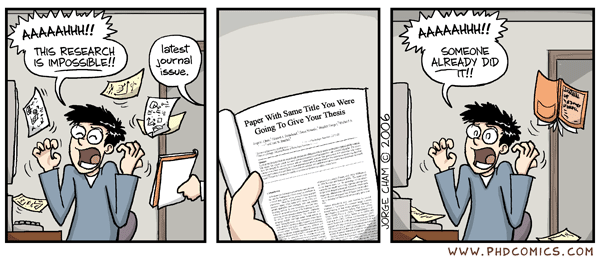With the introduction of web blogging, tagging, social networking, and creating, known as Web 2.0, comes a whole new way of operating and thinking. The table on the right was compiled by Tim O'Reilly in his article, "What is web 2.0". As you can see, the web 2.0 adds life and true attendance to the web. It allows for individuals to add, create, connect, correct...You can even make your own website! This entire new face gives rise to an increase in websites and knowledge shared. Some may argue that as knowledge becomes increasingly edited by the masses, it may lose authority or fidelity. However, thousands of eyeballs are still more effective than an elite group of a few.
As web 2.0 took off and has added an increase of knowledge and obtainability, scientists are beginning to toy with the idea of Science 2.0.
Publishing in a scientific journal such as Science, Cell, and Nature, for a scientist is not only a great honor, but also a "requirement/calling". The following quote helps understand the pressure for a scientist to publish, taken from the article, Publish or Perish, "Publication is the measure of one's research potential and contribution."
With such a great pressure on scientists to publish comes many issues. The great competition that requires scientists to "publish or perish" often taints the objectivity and integrity of research. The research done on these "unpublishable" projects still use time, money, manpower, and peer editing time. (Do Pressures to Publish Increase Scientists' Bias?)
One proposed remedy links Web 2.0 principles with Science. The result is Science 2.0! A number of researchers, including both younger and world renown scientists, have begun carrying their work via blogs, wikis, and social networks. These scientists do not fear being scooped (the term used in the scientific community when another research team publishes the research you are working on before you do).
Rather, the attitude is, "Science happens not just because of people doing experiments, but because they're discussing those experiments." (Christopher Surridge, editor of PLoS ONE). In other words, sharing ideas, critiquing ideas, communication, correcting ideas of colleagues, building off of others discoveries, and creating new knowledge is the key to scientific advancement.


This is one of the coolest posts I've ever read! The cool thing was that it was also discussed in class! Way to go!
ReplyDeleteI wish we'd brought this post up in class because it was so on target. Thanks for doing the research and writing on this, Jeff. You might also follow up by looking at the Open Science and Open Notebook Science movements.
ReplyDeleteThanks for mentioning ONS Gideon - there are more examples of specific Science2.0 applications there
ReplyDelete